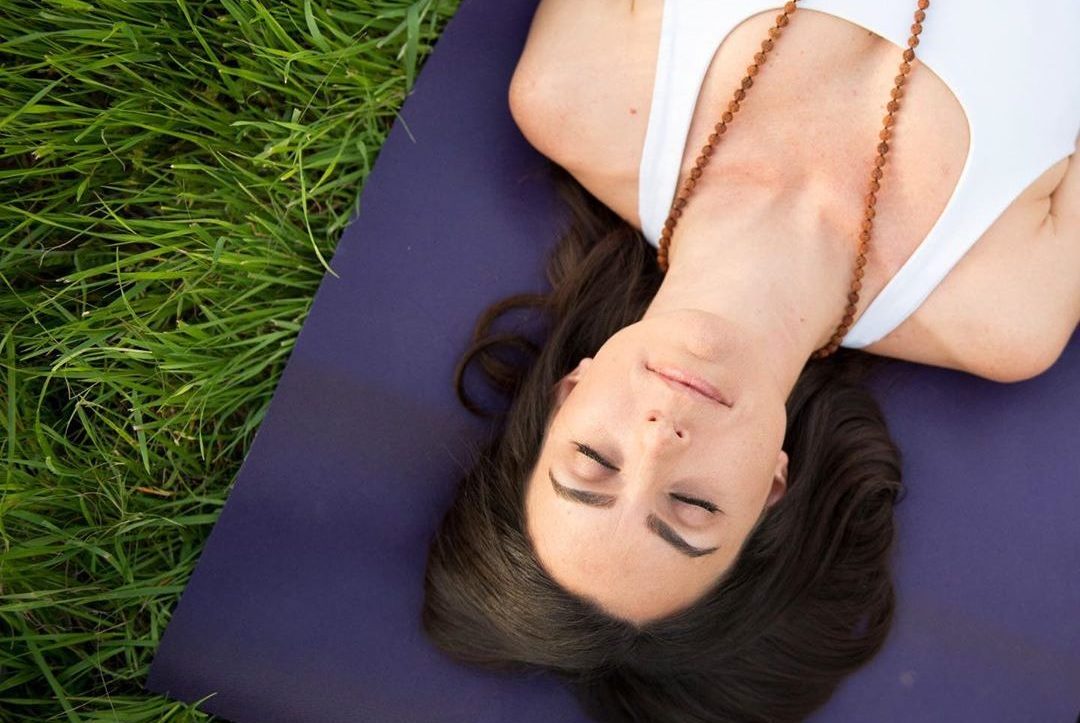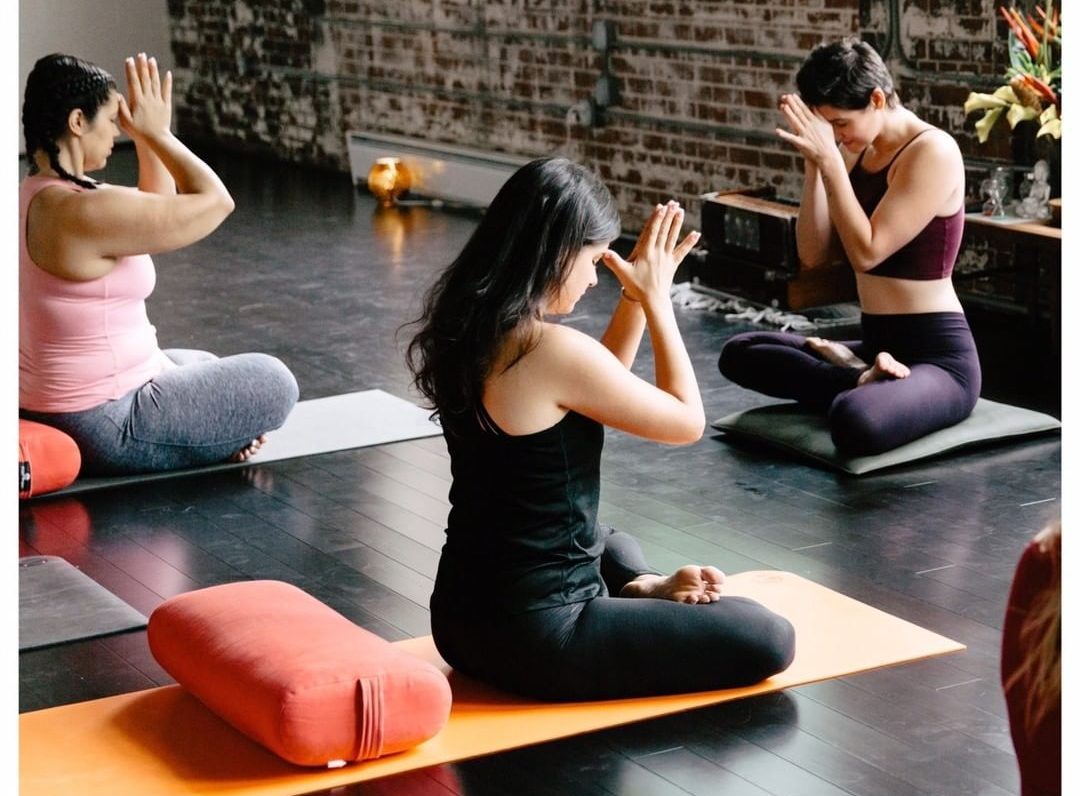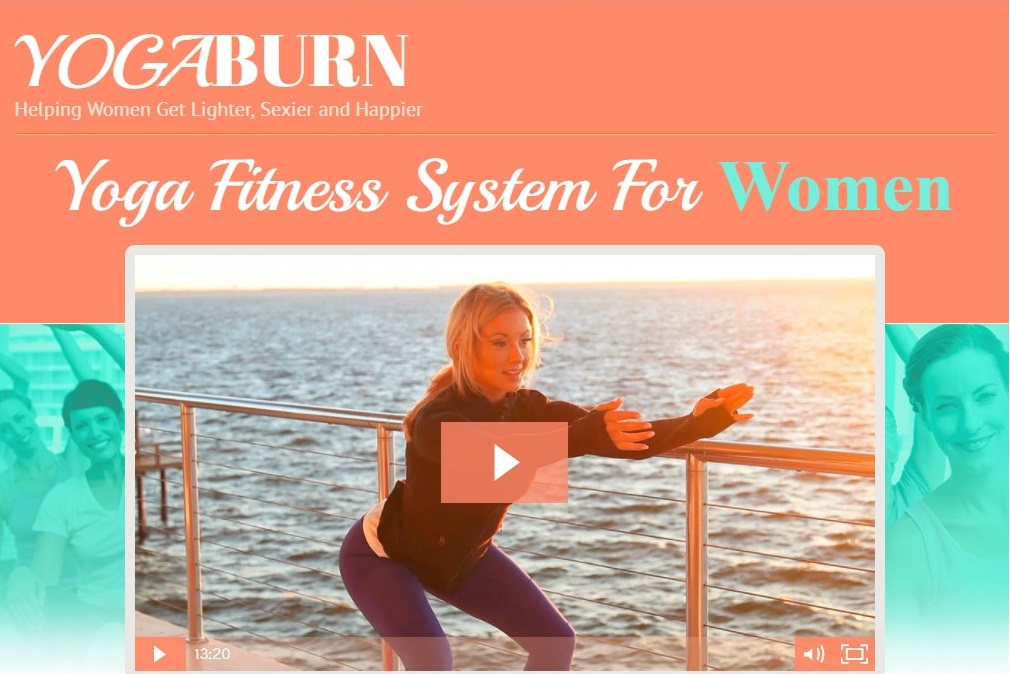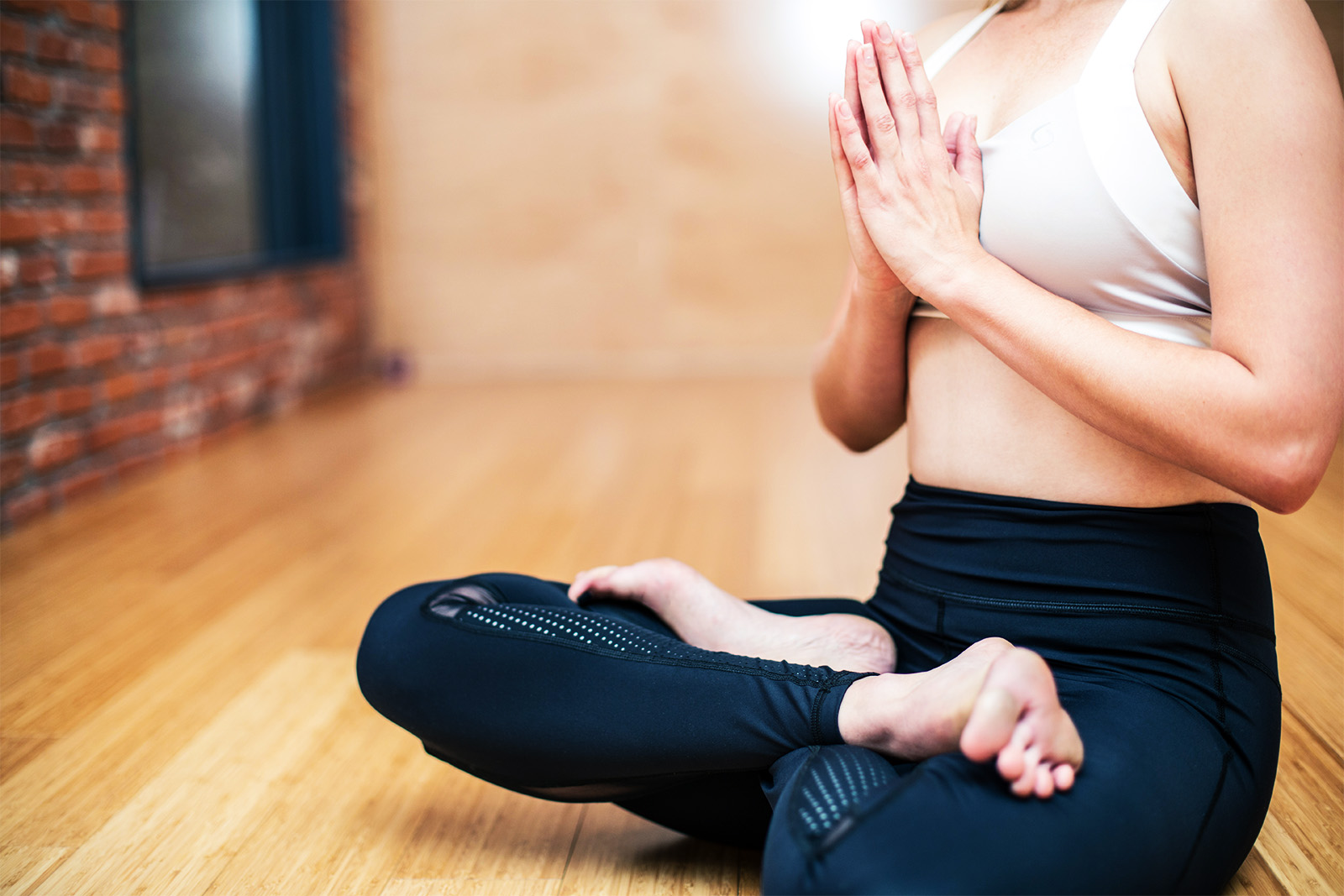Yoga and relaxation
Relaxation is both a goal and a benefit of yoga. Indeed, people often come to their first yoga class to relax, with the intention of forgetting their worries and saying goodbye to stress. But on the other hand, for some people, relaxation is not a goal in itself. Some students come looking for an activity that allows them to move and stretch their bodies gently. Nevertheless, they testify that at the end of their session, they feel deeply relaxed. So how does yoga help us relax? Why is final relaxation so important in a yoga session? What about Savasana? I explain everything about yoga and relaxation in this article.
Yoga and relaxation: why does yoga manage to relax us?
Going to a yoga class means above all "taking a moment for yourself" in a quiet environment. We find ourselves in a Zen place, surrounded by good energy, far from the hustle and bustle of everyday life (phone calls, horns...). It is already the very atmosphere of the yoga room that has a calming effect on the students. Indeed, the studio is a place where one avoids making noise, where the light is dimmed and where everyone cultivates a space of their own, both benevolent and soothing.
On the other hand, yoga brings you to turn towards yourself. Indeed, the goal of your practice is not to be the best in all postures. It will consist above all in listening to you. Often, your yoga session is a time to pause and ask yourself, "How are you today? ». This question is often asked around you, but you forget to ask it to yourself. In yoga, we take the time to listen to the messages of our body and mind. "Where is there tension? What are we concerned about? What emotion is dominant today? »
Through this state of mind, yoga brings us a moment where we are in love with ourselves, fully present in our inner state. Thus, we gently reconnect with our body, with our feelings. And for once, our body doesn't need to explode like a pressure cooker that we left under pressure for too long. We evacuate the tensions little by little, which helps us to relax deeply.
Concentration, immobility and movement are the keys to relaxation.
Moreover, yoga often draws our attention to a certain point. Whether it is for example in balance postures, breathing exercises, but also many other practices. Thus, this state of sustained attention helps us to eliminate thoughts that preoccupy us. We then find ourselves bathed in a feeling of peace, where nothing else matters but what we do here and now. In addition, concentration is a key element in achieving meditation. Thus, if one wants to find wisdom and harmony, it will necessarily go through this state of attention. Yoga postures therefore help us both to relax, by focusing on the present moment, but also to make meditation easier over time.
Finally, there are a multitude of postures that allow us to relax in yoga. For example, the so-called introspection postures are positions where we are turned inward, such as the child posture or the humble warrior posture. They help us to look inward and reach a state of relaxation. On the other hand, staying still, stretching the body gently, moving in coherence with our breathing are all ways to help us relax, which are found in every yoga posture.
However, movement can also help us to relax. Indeed, when we do sequences, especially in Vinyasa yoga or Ashtanga, we are in a dynamic that allows us to reach a state of flow. A state where we no longer think about anything, or even about what we should do. Our brain pauses and we feel deeply relaxed at the end of the sequence. That's why even dynamic yoga sessions are beneficial to help you relax.

Savasana, a good way to end your yoga session
If you practice yoga at home, there is a high risk that you will completely miss the final relaxation. However, you know that it takes place in every yoga class you can take in the studio, so it is certainly very important... I confess I've been there too. It's not easy enough to take a few minutes in your day to practice yoga at home, so lying down in Savasana without doing anything can seem a real challenge for some people.
This is precisely why final relaxation is so important. Because deep down, Savasana is perhaps the most difficult posture in your yoga practice. It is thanks to this posture, lying on your back, arms and legs stretched out on the floor, eyes closed, that you will be able to integrate all the benefits of your session. Indeed, the Savasana posture allows your muscles and your brain to assimilate everything that has been worked on. Moreover, after the effort that you have asked your body to make throughout the practice, you will gradually feel all the tensions relax as well as your mind.
In reality, Savasana, or corpse posture, is one of the simplest postures in the world. It is not about flexibility or balance, but simply about lying on your mat. You've been doing it all your life! And yet, you will see that this posture is a real challenge. Is it so easy to stay completely still for a few minutes? Doesn't your mind come back to remind you of all the things that need to be done that are always so urgent? Aren't there areas that itch, sting, as if to tell you it's time to get out of your relaxed state? And deep down, aren't you bored to death in this posture? So much so that you weigh yourself inside during the whole relaxation process!
So, when you start yoga, Savasana will undoubtedly be a challenge! Your goal will simply be to keep this inward gaze as much as possible. Take the opportunity to observe your thoughts, without judging them. Simply let them pass in front of you: they do not belong to you.
Moreover, during your first yoga classes, it is normal to be bored in Savasana or to feel like you are wasting your time. This will become more pleasant as time goes by and you will stop brooding. If these thoughts happen, it is precisely because your mind is trying not to lose control. So don't hesitate to persevere: you need this moment of stillness.

Relaxation in yoga generally concludes each session, regardless of the style of yoga practiced. It lasts between 10 and 20 minutes depending on the class and the teacher. However, if you wish to do a longer relaxation, you can turn to a Yoga Nidra class where you will enter a state of even deeper relaxation.
It's the end of your yoga class and it's time to lie down on your mat? Then, here are some tips to make your final relaxation go as smoothly as possible. First of all, you will need to feel good at this time. To do this, find a suitable posture. Take the time to move your arms, legs or head slightly to tell you "I feel good this way".
The idea is also to be neither too hot nor too cold. So don't hesitate to cover yourself with a sweater or plaid and put your socks back on. One cools down quickly once immobile. Then, you need enough space to be able to relax quietly. A space which thus extends a little beyond your carpet. Thus, do not hesitate to check that your carpet is not too much stuck to that of your neighbor.
Getting ready to relax
Finally, most often, the final relaxation in yoga takes place in the dark, to allow you to disconnect a little more easily. It is possible that you fall asleep during this moment: it's totally ok! This is what your body needs the most today, it just sends you a signal ...
Most of the time you will be guided by your teacher during Savasana or you will remain in silence. This will give you a good opportunity to pay attention to your thoughts. You can also scan the areas of your body in order to relax them completely one by one. In this way, you will gradually achieve a deep relaxation of your body and mind.
Finally, to come out of this final relaxation, you will be able to get back in touch with your breathing, which has become slower and deeper. Slightly move your fingers and toes, head from right to left and turn to one side, in the fetal position. Use your hand to get up and sit for a few moments in your suit on your mat. Always keep your eyes closed. It is often at this moment that your teacher closes the session with the mantra "Om" or Namaste. However, if you do this relaxation at home, you can also take a moment to thank yourself, by placing your hands joined in prayer above your heart and lowering your head slightly forward.
Yoga relaxation postures
As you can imagine, the Savasana posture is not the only relaxation posture in yoga.
For example, you can also lie on your mat, on your back, knees bent, with the soles of your feet on the floor. Your feet are placed on each side of the mat, a little wider than your hips and your knees are glued together. This posture relieves the lower back.
On the other hand, if you wish to end your session in another way, you can also sit in a suit on your mat, one hand on your chest and the other on your stomach to pay attention to your breathing. It is also possible to put both hands on your knees in a meditation posture. During this quiet time, take a moment to be grateful for something that happened in your day, to find something to be proud of today and/or to thank you for taking time for yourself.
It is also possible to do the relaxation posture lying on your side in the fetal position. Don't hesitate to place a cushion between your legs and under your head to be more comfortable. This relaxation position will probably be more pleasant than Savasana if you are pregnant, but it can also be done by all practitioners.

The benefits of relaxation in yoga
In summary, relaxation in yoga has multiple benefits for the body and mind. Here is a non-exhaustive list:
- Reduces physical tension
- Reduces mental tensions (stress, preoccupation)
- Teaches you to meditate
- Develops your concentration
- Helps you take care of yourself
- Gives you energy back
- Promotes restful sleep
Vous en savez désormais beaucoup plus sur la relaxation, le yoga et la fameuse posture de Savasana. N’hésitez pas à partager dans l’espace des commentaires, votre ressenti face à ce moment de relaxation en yoga, ce que cela vous apporte, si c’est difficile ou non, et bien sûr les bienfaits que vous ressentez.


